WHAT IS A GRAVITATIONAL WAVE
Gravitational Waves Explained (3 min)
https://www.youtube.com/watch?v=4GbWfNHtHRg
Wikipedia - Gravitational Wave
https://en.wikipedia.org/wiki/Gravitational_wave
Gravitational waves are disturbances in the curvature of
spacetime, generated by accelerated masses, that propagate
as waves outward from their source at the speed of light.
They were proposed by Henri Poincar? in 1905[1] and
subsequently predicted in 1916 by Albert Einstein on
the basis of his general theory of relativity
What are Gravitational Waves? | LIGO Lab | Caltech
https://www.ligo.caltech.edu/page/what-are-gw
Gravitational waves are 'ripples' in space-time caused by
some of the most violent and energetic processes in the
Universe. Albert Einstein predicted the existence of
gravitational waves in 1916 in his general theory of
relativity. Einstein's mathematics showed that massive
accelerating objects (such as neutron stars or black holes
orbiting each other) would disrupt space-time in such a way
that 'waves' of undulating space-time would propagate in all
directions away from the source. These cosmic ripples would
travel at the speed of light, carrying with them information
about their origins, as well as clues to the nature of
gravity itself.
THE MICHELSON-MORLEY EXPERIMENT (1887)
Michelson-Morley experiment was devised on the premise that if
Ether exists in space, then Earth moving through that Ether
medium would feel 'Ether winds', just like how a bike rider
moving through air would feel air winds.
And it was premised that light beams passed in different
directions i.e. one beam passed perpendicular to the direction
of the Ether wind and another beam passed along the direction
of the Ether wind would take different times to travel the
same distance.
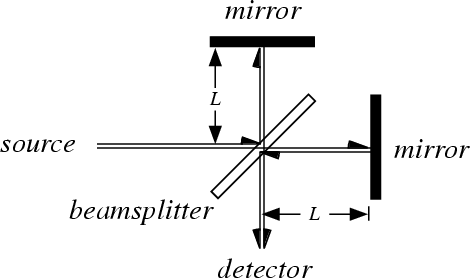 o Length of orthogonal arms are identical and fixed.
o The speed of light along orthogonal arms was expected
to be different.
To the astonishment of the scientific minds, the experiment
yielded no interference between the returning beams. It
implied that both the returning beams have arrived at the half
silvered mirror at the same time contrary to their expectation
that the 'perpendicular beam' would take longer for the return
trip than the 'parallel beam'.
o Length of orthogonal arms are identical and fixed.
o The speed of light along orthogonal arms was expected
to be different.
To the astonishment of the scientific minds, the experiment
yielded no interference between the returning beams. It
implied that both the returning beams have arrived at the half
silvered mirror at the same time contrary to their expectation
that the 'perpendicular beam' would take longer for the return
trip than the 'parallel beam'.
SPECIAL RELATIVITY (1905)
ON THE ELECTRODYNAMICS OF MOVING BODIES
https://www.fourmilab.ch/etexts/einstein/specrel/specrel.pdf
GENERAL RELATIVITY (1915)
Beautiful, Simple and Profound
http://edu-observatory.org/olli/GR/index.html
When Einstein announced his General Relativity Paper in 1915,
he rewrote the rules for space and time that had prevailed for
more than 200 years, since the time of Newton, stipulating a
static and fixed framework for the universe. Instead, Einstein
said, matter and energy distort the geometry of the universe
in the way a heavy sleeper causes a mattress to sag, producing
the effect we call gravity.
A disturbance in the cosmos could cause space-time to stretch,
collapse and even jiggle, like a mattress shaking when that
sleeper rolls over, producing ripples of gravity:
gravitational waves.
 Einstein was not quite sure about these waves. In 1916, he
told Karl Schwarzschild, the discoverer of black holes, that
gravitational waves did not exist, then said they did. In
1936, he and his assistant Nathan Rosen set out to publish a
paper debunking the idea before doing the same flip-flop
again.
According to the equations physicists have settled on,
gravitational waves would compress space in one direction and
stretch it in another as they traveled outward.
Einstein was not quite sure about these waves. In 1916, he
told Karl Schwarzschild, the discoverer of black holes, that
gravitational waves did not exist, then said they did. In
1936, he and his assistant Nathan Rosen set out to publish a
paper debunking the idea before doing the same flip-flop
again.
According to the equations physicists have settled on,
gravitational waves would compress space in one direction and
stretch it in another as they traveled outward.
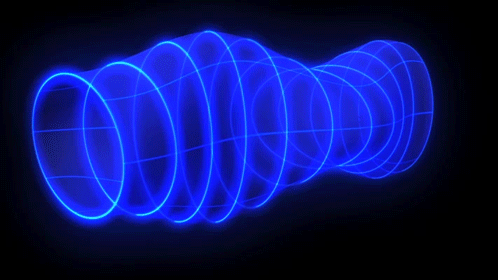
EARLY EXPERIMENT TO DETECT GRAVITATIONAL WAVES (1969)
In 1969, Joseph Weber, a physicist at the University of
Maryland, claimed to have detected gravitational waves using a
six-foot-long aluminum cylinder as an antenna. Waves of the
right frequency would make the cylinder ring like a tuning
fork, he said.
Others could not duplicate his result, but few doubted that
gravitational waves were real. Dr. Weber's experiment inspired
a generation of scientists to look harder for Einsteinian
marks on the universe.
SERENDIPITY (1978)
In 1978, the radio astronomers Joseph H. Taylor Jr. and
Russell A. Hulse, then at the University of Massachusetts
Amherst, discovered a pair of neutron stars, superdense
remnants of dead stars, orbiting each other. One of them was a
pulsar, emitting a periodic beam of electromagnetic radiation.
By timing its pulses, the astronomers determined that the
stars were losing energy and falling closer together at
precisely the rate that would be expected if they were
radiating gravitational waves.
Hulse-Taylor Pulsar PSR B1913+16 (3 min)
https://www.youtube.com/watch?v=zT3TkA_u0Ws
The radiation of gravitational waves has been inferred from
the Hulse-Taylor binary (and other binary pulsars). Precise
timing of the pulses shows that the stars orbit only
approximately according to Kepler's Laws: over time they
gradually spiral towards each other, demonstrating an energy
loss in close agreement with the predicted energy radiated by
gravitational waves. For their discovery of the first binary
pulsar and measuring its orbital decay due to
gravitational-wave emission, Hulse and Taylor won the 1993
Nobel Prize in Physics.
ADVANCED LIGO (funded by the NSF)
https://en.wikipedia.org/wiki/LIGO#Advanced_LIGO
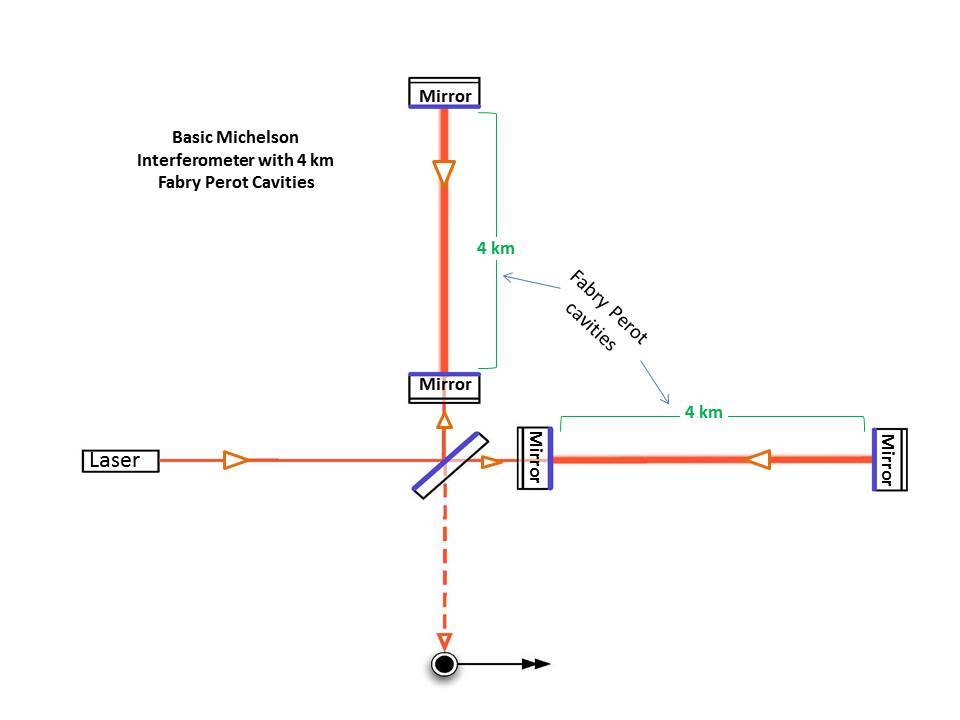 The Advanced LIGO Project to enhance the original LIGO
detectors began in 2008 and continues to be supported by the
NSF, with important contributions from the United Kingdom's
Science and Technology Facilities Council, the Max Planck
Society of Germany, and the Australian Research Council. The
improved detectors began operation in 2015.
The Advanced LIGO Project to enhance the original LIGO
detectors began in 2008 and continues to be supported by the
NSF, with important contributions from the United Kingdom's
Science and Technology Facilities Council, the Max Planck
Society of Germany, and the Australian Research Council. The
improved detectors began operation in 2015.
FIRST DETECTION
September 14, 2015 - Observation of Gravitational Waves from
a Binary Black Hole Merger
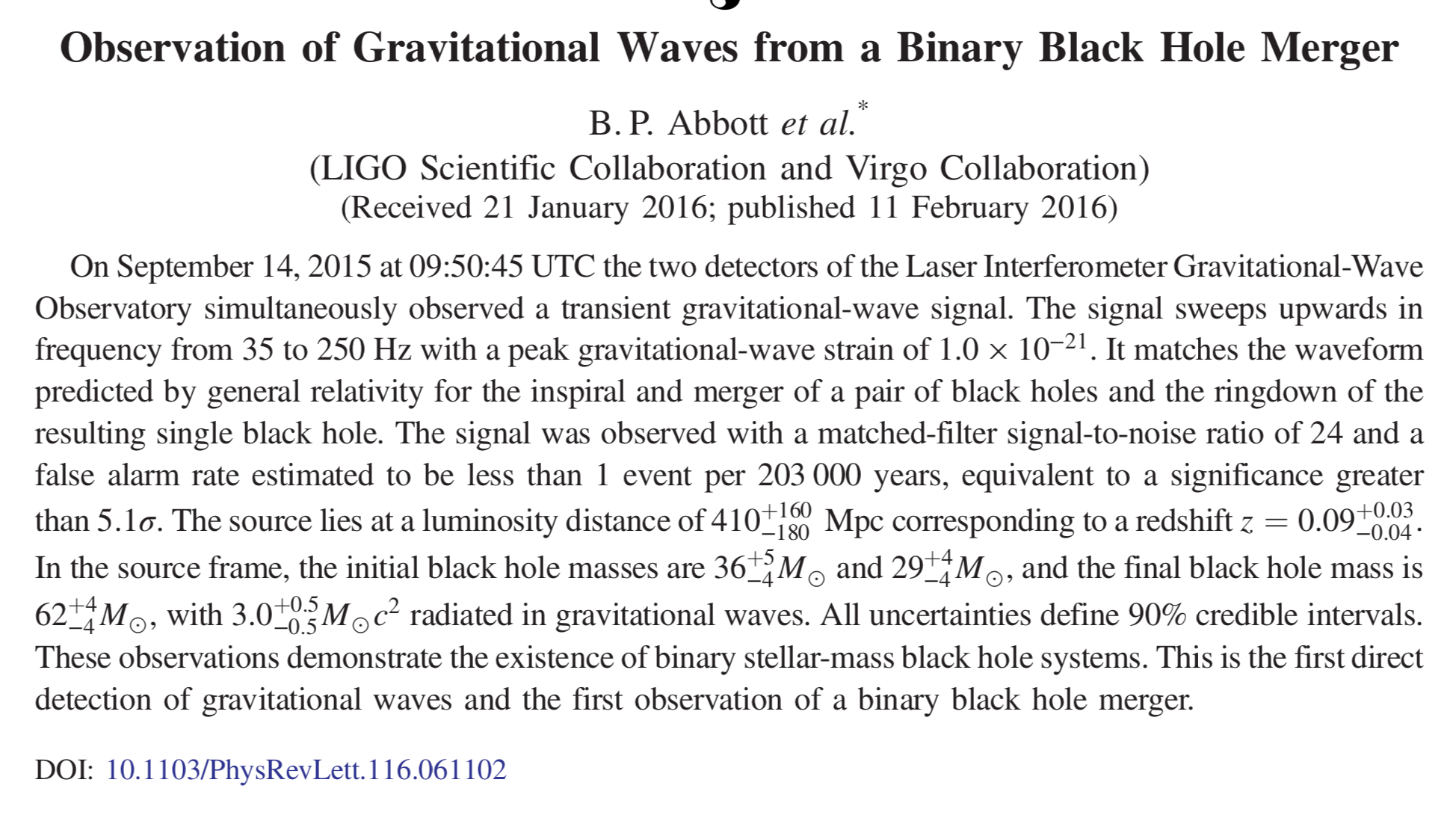
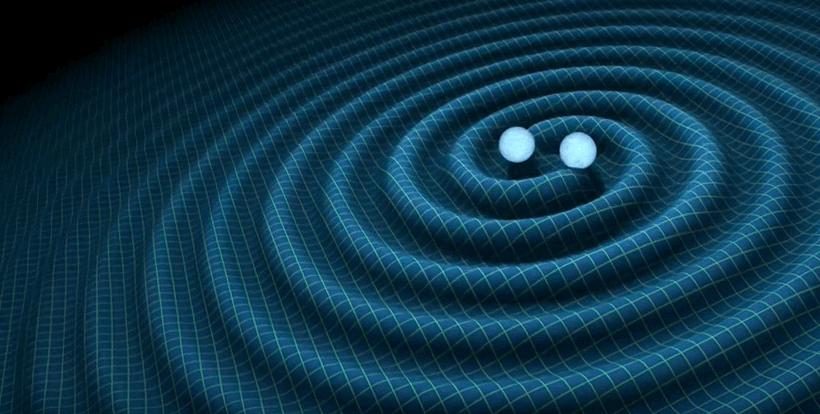 Gravitational Waves Explained Simply to the Public, LIGO video
animation documentary introduction (9 min)
https://www.youtube.com/watch?v=LLJHwrySXAU
AFTER MANY GRAVITY WAVE DETECTIONS - JACK POT
GW170817
Multi-messenger Observations of a Binary Neutron Star Merger
https://iopscience.iop.org/article/10.3847/2041-8213/aa91c9
LIGO Detection Papers
https://www.ligo.caltech.edu/page/detection-companion-papers
On August 17th, 2017, the Advanced Laser Interferometer
Gravitational-Wave Observatory (LIGO) registered tiny ripples
in spacetime, produced by a pair of frantically orbiting
neutron stars right before they collided (GW170817). A Gamma
Ray Burst was observed at the same time from the same region
of the sky.
Ripples of Gravity, Flashes of Light (4 min)
https://www.youtube.com/watch?time_continue=3&v=EtIkOjq0_50
The excitement is fully justified--observing both
gravitational waves and electromagnetic radiation from the
catastrophic coalescence of two hyper-dense neutron stars
provides astronomers with a wealth of new, detailed
information.
The gravitational wave signal indicated that it was produced
by the collision of two neutron stars with a total mass of
2.82 +0.47 -0.09 solar masses.
SCIENTIFIC INTEREST IN THE EVENT HAS BEEN ENORMOUS
Scientific interest in the event has been enormous, with
dozens of preliminary papers (and almost 100 preprints)
published the day of the announcement, including eight letters
in Science, six in Nature, and 32 in a special issue of The
Astrophysical Journal Letters devoted to the subject. The
interest and effort was global: the paper describing the
multi-messenger observations is coauthored by almost 4,000
astronomers (about one-third of the worldwide astronomical
community) from more than 900 institutions, using more than 70
observatories on all seven continents and in space.
This is not the first observation that is known to be of a
neutron star merger; GRB 130603B was the first observed
kilonova. It is however, by far the best observation, making
this the strongest evidence to date to confirm the hypothesis
that mergers of binary stars are the cause of short gamma-ray
bursts.
The event also provides a limit on the difference between the
speed of light and that of gravity. Assuming the first photons
were emitted between zero and ten seconds after peak
gravitational wave emission, the difference between the speeds
of gravitational and electromagnetic waves, vGW - vEM, is
constrained to between -3x10-15 and +7x10-16 times the speed
of light, which improves on the previous estimate by about 14
orders of magnitude.
In addition, it allowed investigation of the equivalence
principle (through Shapiro delay measurement) and Lorentz
invariance. The limits of possible violations of Lorentz
invariance (values of 'gravity sector coefficients'') are
reduced by the new observations, by up to ten orders of
magnitude.
GW170817 also excluded some alternatives to general
relativity, including variants of scalar-tensor theory,
Horava-Lifshitz gravity, Dark Matter Emulators and bimetric
gravity, the details of which are beyond the scope of this
lecture.
Gravitational wave signals such as GW170817 may be used as a
standard siren to provide an independent measurement of the
Hubble constant. An initial estimate of the constant derived
from the observation is 70.0 +12.0 -8.0 (km/s)/Mpc, broadly
consistent with current best estimates.
Electromagnetic observations helped to support the theory that
the mergers of neutron stars contribute to rapid neutron
capture r-process nucleosynthesis and are significant sources
of r-process elements heavier than iron, including gold and
platinum.
Gravitational Waves Explained Simply to the Public, LIGO video
animation documentary introduction (9 min)
https://www.youtube.com/watch?v=LLJHwrySXAU
AFTER MANY GRAVITY WAVE DETECTIONS - JACK POT
GW170817
Multi-messenger Observations of a Binary Neutron Star Merger
https://iopscience.iop.org/article/10.3847/2041-8213/aa91c9
LIGO Detection Papers
https://www.ligo.caltech.edu/page/detection-companion-papers
On August 17th, 2017, the Advanced Laser Interferometer
Gravitational-Wave Observatory (LIGO) registered tiny ripples
in spacetime, produced by a pair of frantically orbiting
neutron stars right before they collided (GW170817). A Gamma
Ray Burst was observed at the same time from the same region
of the sky.
Ripples of Gravity, Flashes of Light (4 min)
https://www.youtube.com/watch?time_continue=3&v=EtIkOjq0_50
The excitement is fully justified--observing both
gravitational waves and electromagnetic radiation from the
catastrophic coalescence of two hyper-dense neutron stars
provides astronomers with a wealth of new, detailed
information.
The gravitational wave signal indicated that it was produced
by the collision of two neutron stars with a total mass of
2.82 +0.47 -0.09 solar masses.
SCIENTIFIC INTEREST IN THE EVENT HAS BEEN ENORMOUS
Scientific interest in the event has been enormous, with
dozens of preliminary papers (and almost 100 preprints)
published the day of the announcement, including eight letters
in Science, six in Nature, and 32 in a special issue of The
Astrophysical Journal Letters devoted to the subject. The
interest and effort was global: the paper describing the
multi-messenger observations is coauthored by almost 4,000
astronomers (about one-third of the worldwide astronomical
community) from more than 900 institutions, using more than 70
observatories on all seven continents and in space.
This is not the first observation that is known to be of a
neutron star merger; GRB 130603B was the first observed
kilonova. It is however, by far the best observation, making
this the strongest evidence to date to confirm the hypothesis
that mergers of binary stars are the cause of short gamma-ray
bursts.
The event also provides a limit on the difference between the
speed of light and that of gravity. Assuming the first photons
were emitted between zero and ten seconds after peak
gravitational wave emission, the difference between the speeds
of gravitational and electromagnetic waves, vGW - vEM, is
constrained to between -3x10-15 and +7x10-16 times the speed
of light, which improves on the previous estimate by about 14
orders of magnitude.
In addition, it allowed investigation of the equivalence
principle (through Shapiro delay measurement) and Lorentz
invariance. The limits of possible violations of Lorentz
invariance (values of 'gravity sector coefficients'') are
reduced by the new observations, by up to ten orders of
magnitude.
GW170817 also excluded some alternatives to general
relativity, including variants of scalar-tensor theory,
Horava-Lifshitz gravity, Dark Matter Emulators and bimetric
gravity, the details of which are beyond the scope of this
lecture.
Gravitational wave signals such as GW170817 may be used as a
standard siren to provide an independent measurement of the
Hubble constant. An initial estimate of the constant derived
from the observation is 70.0 +12.0 -8.0 (km/s)/Mpc, broadly
consistent with current best estimates.
Electromagnetic observations helped to support the theory that
the mergers of neutron stars contribute to rapid neutron
capture r-process nucleosynthesis and are significant sources
of r-process elements heavier than iron, including gold and
platinum.
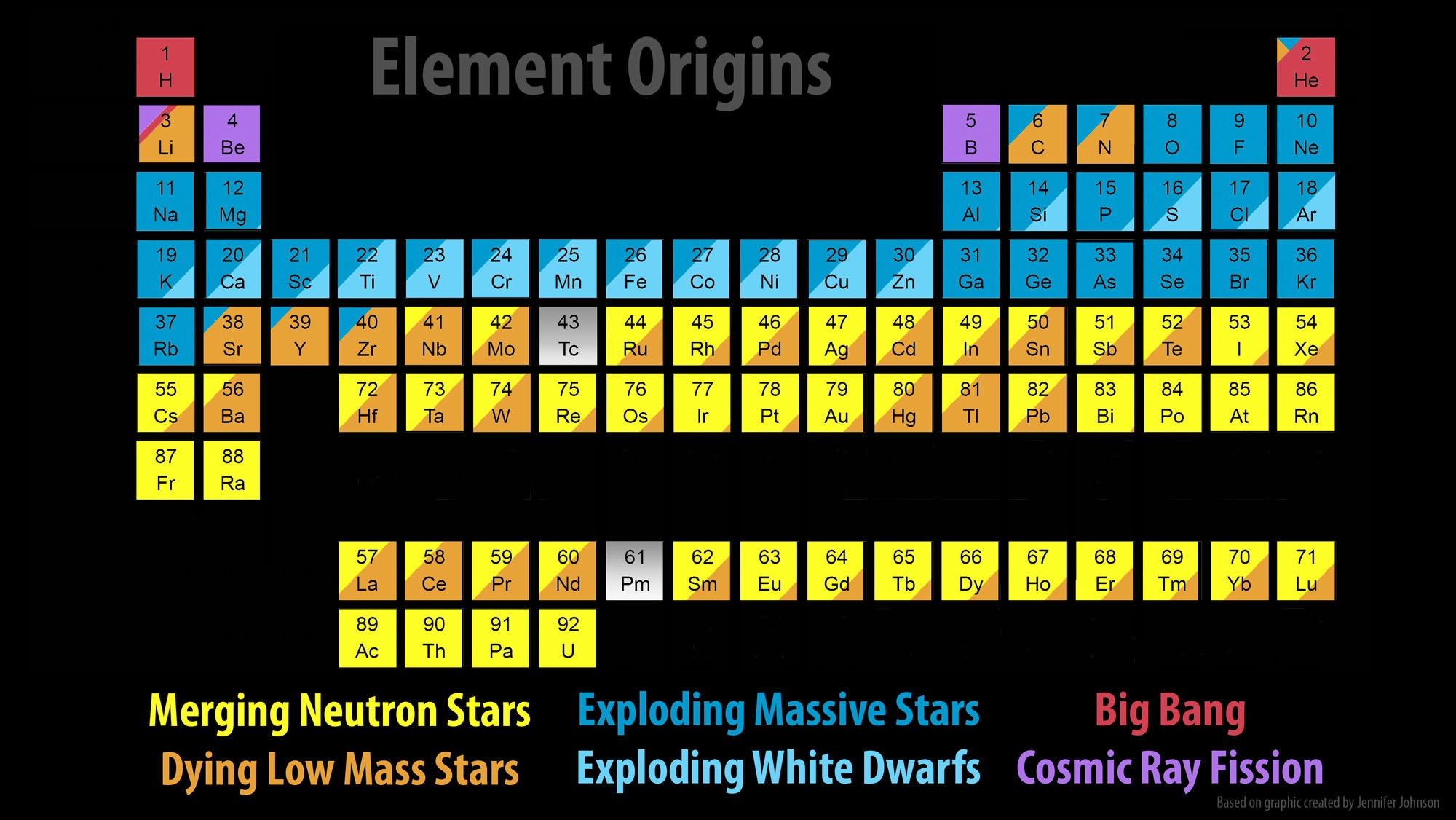 Rising stars of multi-messenger astronomy
https://www.symmetrymagazine.org/article/rising-stars-of-multi-messenger-astronomy
Gravitational waves have been described as ripples in the
fabric of spacetime. They are the wake left behind when an
object with gravitational pull-so, any object with
mass-changes its speed. When two enormous neutron stars go
through a particularly drastic change in speed by colliding
and merging, the gravitational waves released are powerful
enough for scientists to detect them on Earth, 130 million
light-years away.
That's what happened at 12:41 universal time last August.
The Laser Interferometer Gravitational-Wave Observatory
detectors in Hanford, Washington, and Livingston, Louisiana,
recorded gravitational waves the likes of which no one had
ever seen. Previous gravitational-wave signals had lasted a
few seconds; this one was in range for more than 100.
Additional data from the Virgo gravitational-wave detector
near Pisa, Italy, helped scientists triangulate the
gravitational waves' origin in the sky.
Astrophysicist Wilson-Hodge, the principal investigator on
the NASA's Fermi Gamma-ray Space Telescope's Gamma-ray Burst
Monitor team, was in training, learning how to motivate her
team. When she received the notification from LIGO-Virgo,
she knew motivation wouldn't be hard to find: The GBM sent
out an alert of its own that morning from a high-energy
blast of light called a gamma-ray burst, recorded just two
seconds after the gravitational-wave signal passed the
Earth. "It was pretty clear it was something really
exciting," she says.
Rising stars of multi-messenger astronomy
https://www.symmetrymagazine.org/article/rising-stars-of-multi-messenger-astronomy
Gravitational waves have been described as ripples in the
fabric of spacetime. They are the wake left behind when an
object with gravitational pull-so, any object with
mass-changes its speed. When two enormous neutron stars go
through a particularly drastic change in speed by colliding
and merging, the gravitational waves released are powerful
enough for scientists to detect them on Earth, 130 million
light-years away.
That's what happened at 12:41 universal time last August.
The Laser Interferometer Gravitational-Wave Observatory
detectors in Hanford, Washington, and Livingston, Louisiana,
recorded gravitational waves the likes of which no one had
ever seen. Previous gravitational-wave signals had lasted a
few seconds; this one was in range for more than 100.
Additional data from the Virgo gravitational-wave detector
near Pisa, Italy, helped scientists triangulate the
gravitational waves' origin in the sky.
Astrophysicist Wilson-Hodge, the principal investigator on
the NASA's Fermi Gamma-ray Space Telescope's Gamma-ray Burst
Monitor team, was in training, learning how to motivate her
team. When she received the notification from LIGO-Virgo,
she knew motivation wouldn't be hard to find: The GBM sent
out an alert of its own that morning from a high-energy
blast of light called a gamma-ray burst, recorded just two
seconds after the gravitational-wave signal passed the
Earth. "It was pretty clear it was something really
exciting," she says.
Neutron-rich matter in heaven and on Earth
https://physicstoday.scitation.org/doi/10.1063/PT.3.4247
Despite a length-scale difference of 18 orders of magnitude,
the internal structure of neutron stars and the spatial
distribution of neutrons in atomic nuclei are profoundly
connected.
Where do neutrons go? The elusive answer to such a seemingly
simple question provides fundamental new insights into the
structure of both atomic nuclei and neutron stars. To place
the question in the proper context, consider lead-208, the
element's most abundant isotope, which contains 82 protons
and 126 neutrons. As the heaviest known doubly magic
nucleus, 208Pb holds a special place in the nuclear-physics
community. Just as noble gases with filled electronic shells
exhibit low levels of chemical reactivity, doubly magic
nuclei with filled proton and neutron shells display great
stability. Because 208Pb is heavy, the Coulomb repulsion
among its protons leads to a large neutron excess. The Lead
Radius Experiment, or PREX, at the Thomas Jefferson National
Accelerator Facility in Virginia was built to measure the
location of 208Pb's 44 excess neutrons. In turn, a detailed
knowledge of the neutron distribution in 208Pb illuminates
the structure of a neutron star.
Anatomy of a neutron star
With masses comparable to that of our sun but radii of only
10-15 km, neutron stars are unique laboratories for the
study of phenomena that lie well outside the realm of
terrestrial laboratories.
The stellar composition at the highest densities encountered
in a neutron star's inner core is unknown. Depending on the
unknown compressibility of neutron-rich matter, the stellar
core may harbor exotic states of matter, such as deconfined
quark matter, a novel state in which quarks are allowed to
roam freely at enormously high densities. Yet the canonical
picture of the stellar core is that of a uniform liquid
consisting of neutrons, protons, and neutralizing
leptons?electrons and muons?in chemical equilibrium. The
stellar core accounts for practically all the mass and about
90% of a neutron star's size.
Above the uniform core lies the nonuniform stellar crust, a
region about 1 km thick that develops as a consequence of
the short-range nature of the nuclear force. Indeed, at the
subsaturation densities of the stellar crust, it becomes
energetically favorable for neutrons and protons to cluster
into complex nuclei that display highly exotic shapes, often
referred to as nuclear pasta.
The outermost surface of the neutron star constitutes the
very thin atmosphere that is composed of hydrogen but may
also contain heavier elements such as helium and carbon. To
date, most of the information on neutron star radii has been
obtained from the thermal emission from its surface, often
assumed to be consistent with a blackbody spectrum.
Unfortunately, complications due to both distortions to the
blackbody spectrum and distance measurements make the
determination of stellar radii a challenging task. Yet the
discovery of gravitational waves from GW170817 has opened a
new window into the study of neutron star properties and
will nicely complement electromagnetic observations.
All in the family: Kin of gravitational wave source discovered
https://phys.org/news/2018-10-family-kin-gravitational-source.html
Watch Physicist Brian Greene Explain Gravitational Waves To
Stephen Colbert (8 min)
https://www.youtube.com/watch?v=ajZojAwfEbs
The Prediction, Discovery, and Confirmation of Black Holes
http://edu-observatory.org/olli/BH/index.html
Alan Lightman On Richard Feynman's Amazing Mind, Or How
"Hawking Radiation" Could Well Be "Feynman Radiation" (6+ min)
https://player.vimeo.com/video/104516539
David Kaplan is not an Expert (2+ min)
https://www.youtube.com/watch?v=fCLLJ6-7ez0
sam.wormley@icloud.com
o Length of orthogonal arms are identical and fixed. o The speed of light along orthogonal arms was expected to be different. To the astonishment of the scientific minds, the experiment yielded no interference between the returning beams. It implied that both the returning beams have arrived at the half silvered mirror at the same time contrary to their expectation that the 'perpendicular beam' would take longer for the return trip than the 'parallel beam'.
Einstein was not quite sure about these waves. In 1916, he told Karl Schwarzschild, the discoverer of black holes, that gravitational waves did not exist, then said they did. In 1936, he and his assistant Nathan Rosen set out to publish a paper debunking the idea before doing the same flip-flop again. According to the equations physicists have settled on, gravitational waves would compress space in one direction and stretch it in another as they traveled outward.

The Advanced LIGO Project to enhance the original LIGO detectors began in 2008 and continues to be supported by the NSF, with important contributions from the United Kingdom's Science and Technology Facilities Council, the Max Planck Society of Germany, and the Australian Research Council. The improved detectors began operation in 2015.

Gravitational Waves Explained Simply to the Public, LIGO video animation documentary introduction (9 min) https://www.youtube.com/watch?v=LLJHwrySXAU AFTER MANY GRAVITY WAVE DETECTIONS - JACK POT GW170817 Multi-messenger Observations of a Binary Neutron Star Merger https://iopscience.iop.org/article/10.3847/2041-8213/aa91c9 LIGO Detection Papers https://www.ligo.caltech.edu/page/detection-companion-papers On August 17th, 2017, the Advanced Laser Interferometer Gravitational-Wave Observatory (LIGO) registered tiny ripples in spacetime, produced by a pair of frantically orbiting neutron stars right before they collided (GW170817). A Gamma Ray Burst was observed at the same time from the same region of the sky. Ripples of Gravity, Flashes of Light (4 min) https://www.youtube.com/watch?time_continue=3&v=EtIkOjq0_50 The excitement is fully justified--observing both gravitational waves and electromagnetic radiation from the catastrophic coalescence of two hyper-dense neutron stars provides astronomers with a wealth of new, detailed information. The gravitational wave signal indicated that it was produced by the collision of two neutron stars with a total mass of 2.82 +0.47 -0.09 solar masses. SCIENTIFIC INTEREST IN THE EVENT HAS BEEN ENORMOUS Scientific interest in the event has been enormous, with dozens of preliminary papers (and almost 100 preprints) published the day of the announcement, including eight letters in Science, six in Nature, and 32 in a special issue of The Astrophysical Journal Letters devoted to the subject. The interest and effort was global: the paper describing the multi-messenger observations is coauthored by almost 4,000 astronomers (about one-third of the worldwide astronomical community) from more than 900 institutions, using more than 70 observatories on all seven continents and in space. This is not the first observation that is known to be of a neutron star merger; GRB 130603B was the first observed kilonova. It is however, by far the best observation, making this the strongest evidence to date to confirm the hypothesis that mergers of binary stars are the cause of short gamma-ray bursts. The event also provides a limit on the difference between the speed of light and that of gravity. Assuming the first photons were emitted between zero and ten seconds after peak gravitational wave emission, the difference between the speeds of gravitational and electromagnetic waves, vGW - vEM, is constrained to between -3x10-15 and +7x10-16 times the speed of light, which improves on the previous estimate by about 14 orders of magnitude. In addition, it allowed investigation of the equivalence principle (through Shapiro delay measurement) and Lorentz invariance. The limits of possible violations of Lorentz invariance (values of 'gravity sector coefficients'') are reduced by the new observations, by up to ten orders of magnitude. GW170817 also excluded some alternatives to general relativity, including variants of scalar-tensor theory, Horava-Lifshitz gravity, Dark Matter Emulators and bimetric gravity, the details of which are beyond the scope of this lecture. Gravitational wave signals such as GW170817 may be used as a standard siren to provide an independent measurement of the Hubble constant. An initial estimate of the constant derived from the observation is 70.0 +12.0 -8.0 (km/s)/Mpc, broadly consistent with current best estimates. Electromagnetic observations helped to support the theory that the mergers of neutron stars contribute to rapid neutron capture r-process nucleosynthesis and are significant sources of r-process elements heavier than iron, including gold and platinum.
Rising stars of multi-messenger astronomy https://www.symmetrymagazine.org/article/rising-stars-of-multi-messenger-astronomy Gravitational waves have been described as ripples in the fabric of spacetime. They are the wake left behind when an object with gravitational pull-so, any object with mass-changes its speed. When two enormous neutron stars go through a particularly drastic change in speed by colliding and merging, the gravitational waves released are powerful enough for scientists to detect them on Earth, 130 million light-years away. That's what happened at 12:41 universal time last August. The Laser Interferometer Gravitational-Wave Observatory detectors in Hanford, Washington, and Livingston, Louisiana, recorded gravitational waves the likes of which no one had ever seen. Previous gravitational-wave signals had lasted a few seconds; this one was in range for more than 100. Additional data from the Virgo gravitational-wave detector near Pisa, Italy, helped scientists triangulate the gravitational waves' origin in the sky. Astrophysicist Wilson-Hodge, the principal investigator on the NASA's Fermi Gamma-ray Space Telescope's Gamma-ray Burst Monitor team, was in training, learning how to motivate her team. When she received the notification from LIGO-Virgo, she knew motivation wouldn't be hard to find: The GBM sent out an alert of its own that morning from a high-energy blast of light called a gamma-ray burst, recorded just two seconds after the gravitational-wave signal passed the Earth. "It was pretty clear it was something really exciting," she says.